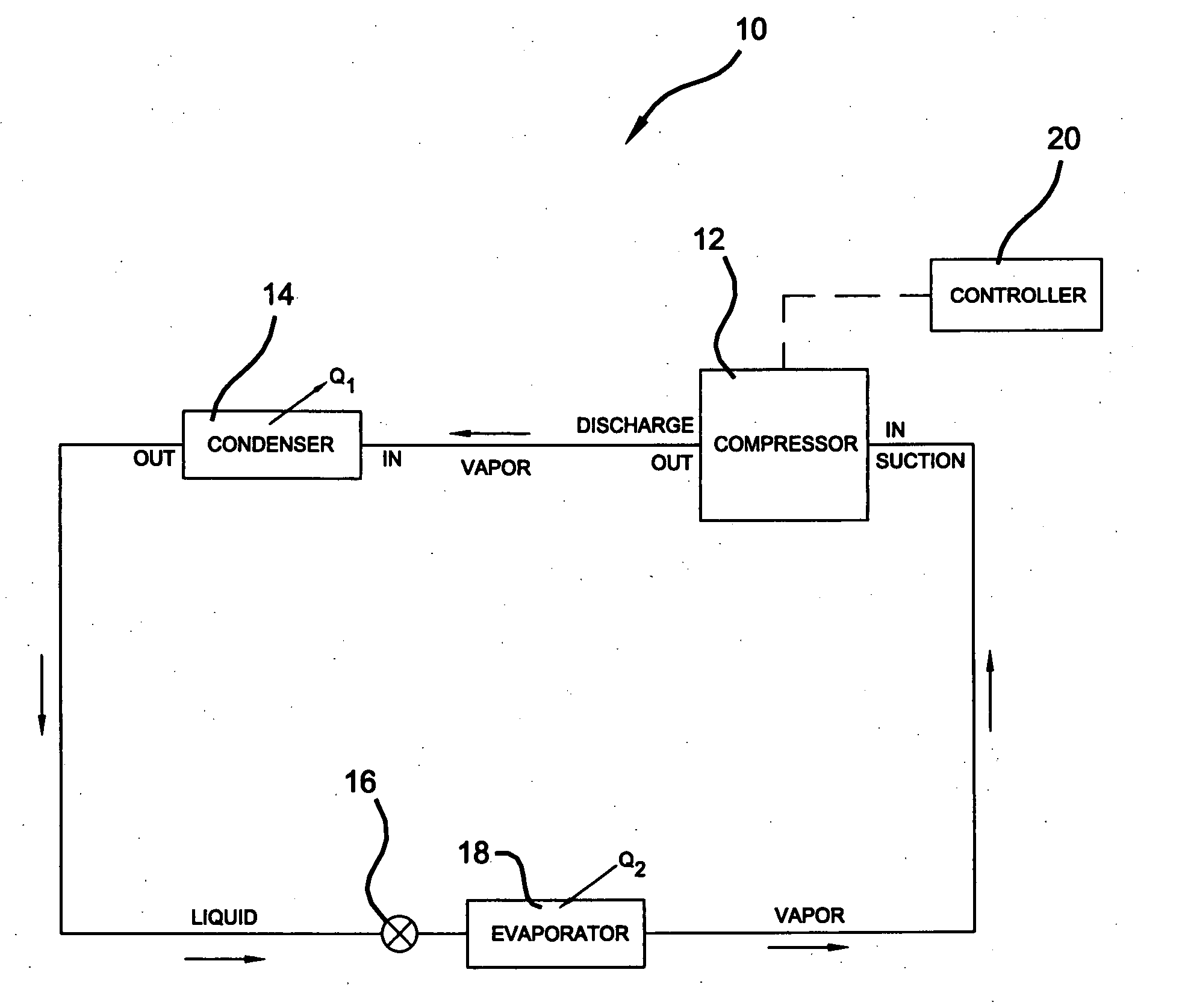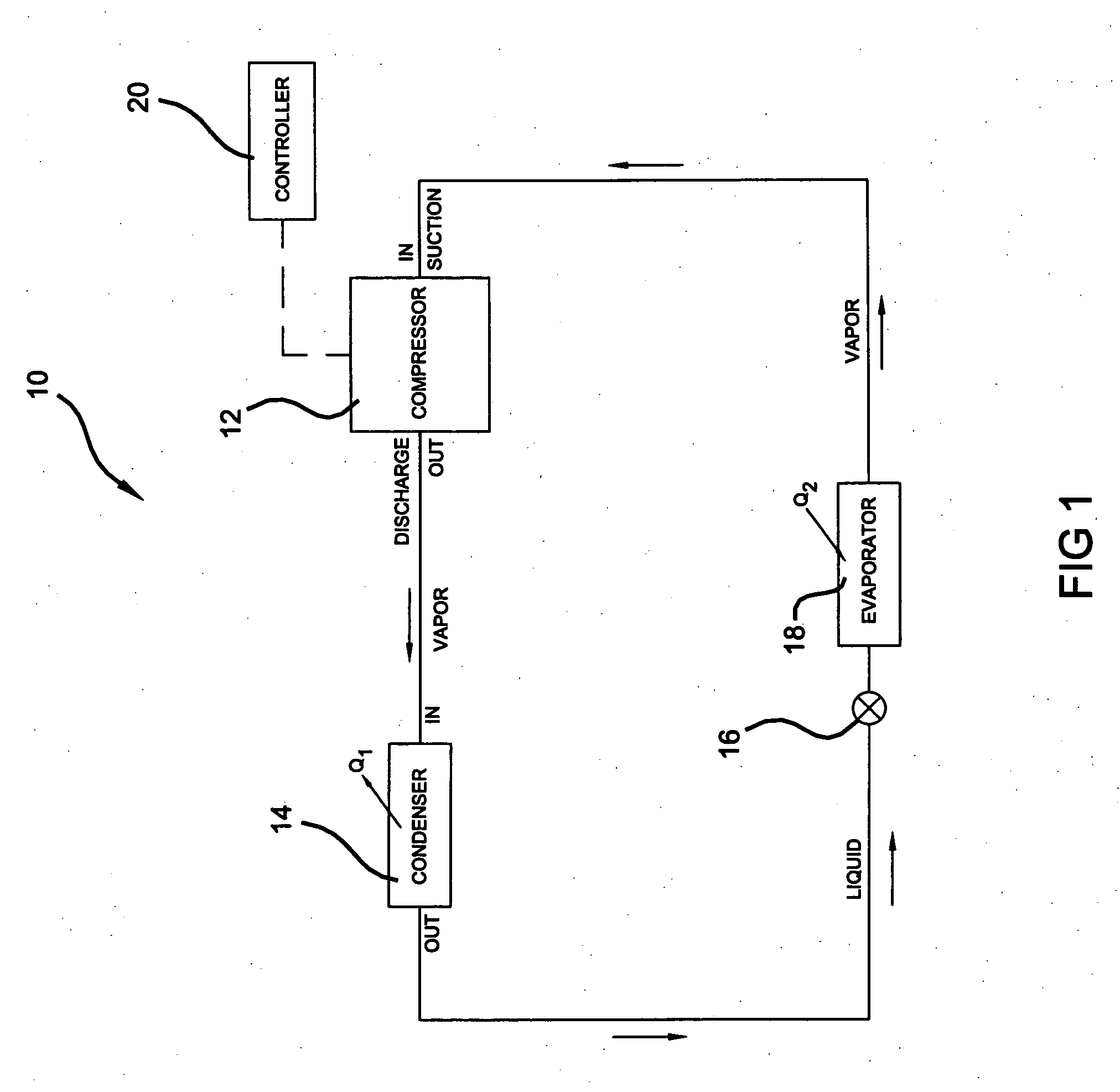Cooling system design simulator
a cooling system and simulation technology, applied in the field of simulation of the performance of the cooling system, can solve the problem that the actual performance of the component within the cooling system may be far less than optimal
- Summary
- Abstract
- Description
- Claims
- Application Information
AI Technical Summary
Benefits of technology
Problems solved by technology
Method used
Image
Examples
Embodiment Construction
[0064] The following description of the preferred embodiments is merely exemplary in nature and is in no way intended to limit the invention, its application, or uses.
[0065] Referring now to FIG. 1, a generic cooling system 10 includes a compressor 12, a condenser 14, an expansion valve 16 and an evaporator 18. The compressor 12 is controlled by a controller 20 and compresses gaseous refrigerant exiting the evaporator 18. The compressor 12 discharges the high pressure refrigerant to the condenser 14. The condenser 14 operates as a heat exchanger enabling heat transfer (Q1) from the gaseous refrigerant to a heat sink (e.g. air or water). The refrigerant condenses within the condenser 14 and a state change occurs from gas to liquid. The liquid refrigerant exits the condenser 14 and flows to the evaporator 18 through the expansion valve 16. The evaporator 18 also operates as a heat exchanger enabling heat transfer (Q2) from the atmosphere surrounding the evaporator 18 to the liquid re...
PUM
 Login to View More
Login to View More Abstract
Description
Claims
Application Information
 Login to View More
Login to View More - R&D
- Intellectual Property
- Life Sciences
- Materials
- Tech Scout
- Unparalleled Data Quality
- Higher Quality Content
- 60% Fewer Hallucinations
Browse by: Latest US Patents, China's latest patents, Technical Efficacy Thesaurus, Application Domain, Technology Topic, Popular Technical Reports.
© 2025 PatSnap. All rights reserved.Legal|Privacy policy|Modern Slavery Act Transparency Statement|Sitemap|About US| Contact US: help@patsnap.com



